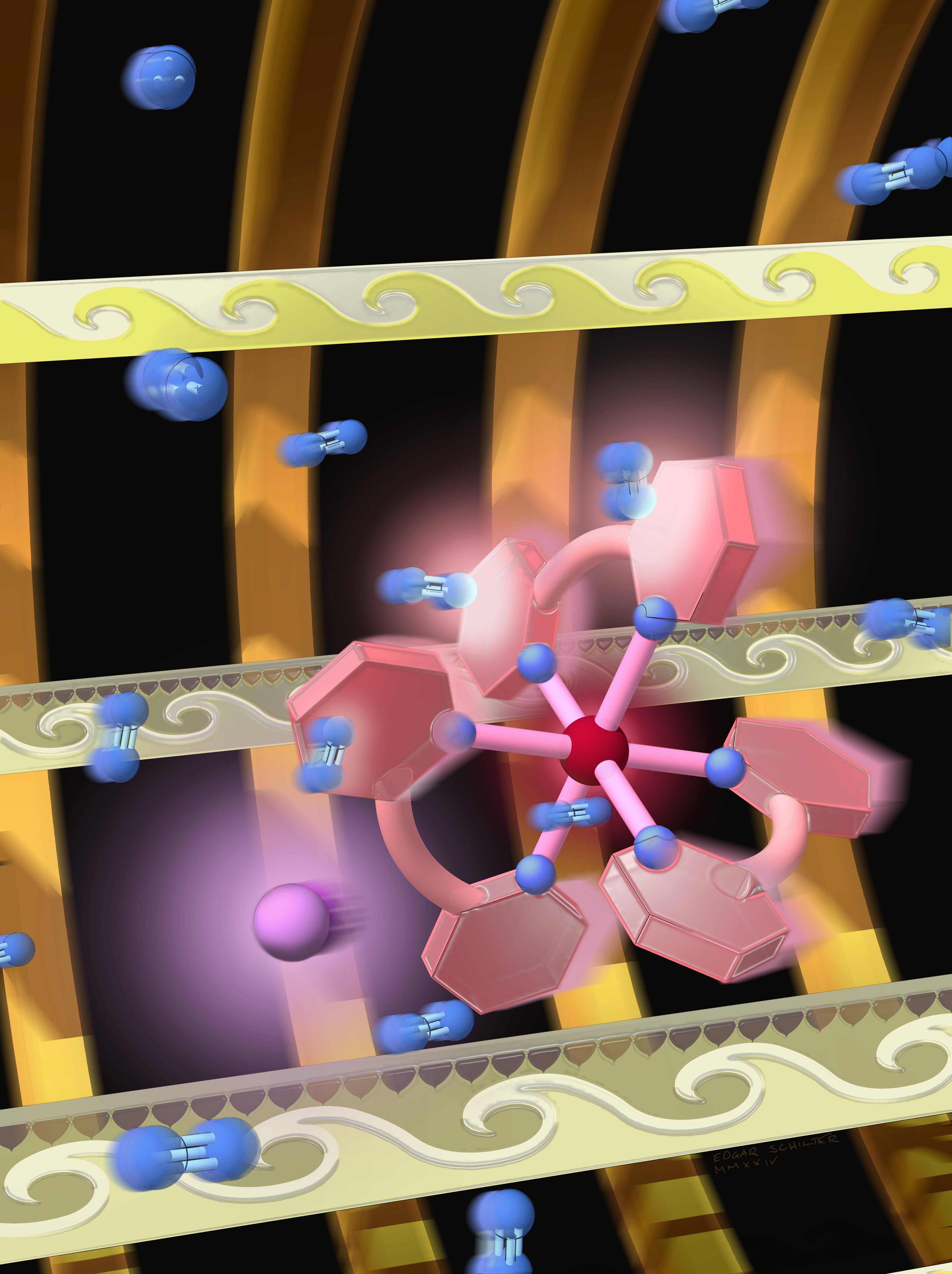Jayme Blaschke | July 15, 2024


Photosensitizers are important chemical compounds that have a wide array of industrial and research applications. These photosensitizers absorb light and then use that gained energy to transfer electrons to or from catalysts, a distinctive ability that is used to help produce anything from pharmaceuticals to renewable fuels.
Now, a team of researchers from Texas State University led by David Schilter, Ph.D., an assistant professor in the Department of Chemistry and Biochemistry, has discovered previously unknown properties of photosensitizers that impact the understanding of these chemical compounds on a fundamental level. The team’s findings, “Ruthenium diimine ion pairs exhibit diverse intra- and intermolecular dynamics,” are published in the journal Cell Reports Physical Science.
“A big area in chemistry these days is photo redox catalysis,” Schilter explained. “As the name suggests, you have a molecule that absorbs light—that’s the ‘photo’ part—before it engages in electron transfer, which chemists call ‘redox.’ I get excited when I take in light, so I give you an electron or I take an electron away from you. Why is that important? Because without that energy input and electron transfer many catalysts cannot convert raw materials into, for example, pharmaceuticals or fuels without that electron transfer.”
Many prominent photosensitizers are dications—molecules that have two positive charges—yet the photosensitizers’ accompanying negatively-charged ions, anions, are rarely given much thought. Schilter’s research team has shown that such ion pairs are structurally dynamic and exhibit charge-transfer, which produces monocations. Monocations are positively-charged ions that are particularly useful for catalysis which form when the dications accept a single electron.
“It was discovered a couple of years ago that the performance of common photosensitizers depends on what anions are hanging around,” Schilter said. “So even if the dication is doing all the work, its ability to absorb light and give or take away electrons depends on those anions. Very few people have understood that interaction. This is the central part of our paper.”
The team also discovered that the photosensitizers, which were long thought to be robust and durable, can fall apart under mild conditions. The work revealed just how important the often-overlooked anions are in governing the stability of those ion pairs, something that researchers should now keep in mind when designing more effective photosensitizers.
“We’ve done a lot of studies on making these ion pairs fall apart,” Schilter said. “Argon’s a noble gas that is non-reactive, but when we use an electric field to slam an ion pair into argon, the ion pair shatters. For a long time, people thought these ion pairs were robust. They thought they could shine light on them, that the ion pairs would transfer electrons and go on forever.
“We’ve found that you can smash them up pretty easily,” he said. “What this means is that researchers should be conscious about what anions they are using, because the way in which ion pairs fall apart is dependent upon the anion.”
Schilter’s team focused on photosensitizers based on ruthenium, a precious metal that is apt to transfer electrons but costly to obtain. Schilter’s team is now undertaking experiments that substitute ruthenium with iron. Although iron is much more abundant, its use is challenging because iron dications are much less stable than their ruthenium counterparts. If successful, this ambitious work could lead to more sustainable processes as part of a “new iron age” of photosensitizer research.
Share this article
For more information, contact University Communications:Jayme Blaschke, 512-245-2555 Sandy Pantlik, 512-245-2922 |
